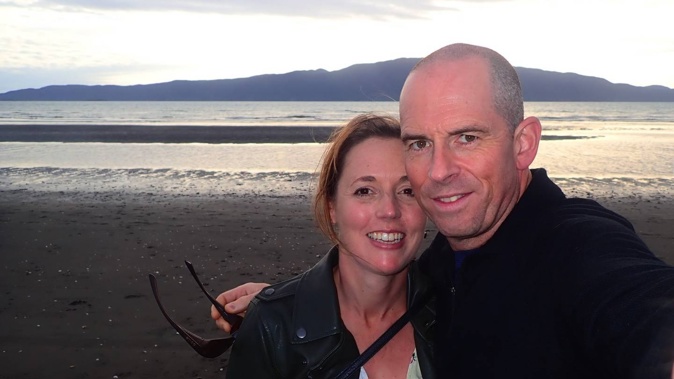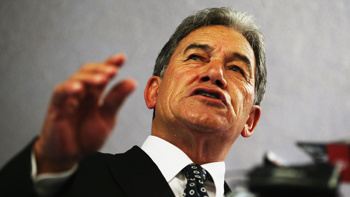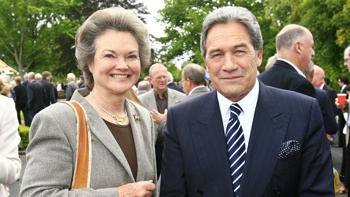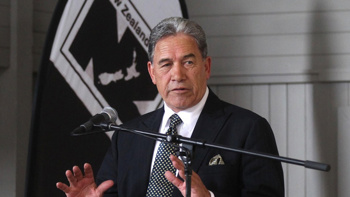

He was a devoted, experienced tramper and a meticulous planner but Ian Michael Harvey died during a final alpine tramp on the West Coast just before he was due to move to the North Island to be with the woman he’d fallen in love.
Kapiti-based nurse Catherine McAra told NZME today that theirs had been “one heck of a love story”, that ended on the brink of their new life together.
She described Harvey, who died in January last year, as a wonderful, authentic, humble person who ironically didn’t like publicity or being the centre of attention.
“He was an extremely competent person in lots of ways - professionally and in all his sporting endeavours and achievements.
“There’s so much to tell you about Ian and I don’t know where to begin.”
/cloudfront-ap-southeast-2.images.arcpublishing.com/nzme/6D4GR55RJ5CWBIII2N5M3F5CKE.jpg)
Ian Harvey was at home in the mountains. Photo / Catherine McAra
Harvey, a Greymouth-based paramedic died after falling from a cliff, having deviated off a track onto an active slip area while on an overnight tramp into the Adam Wilderness Area in Whataroa.
Mount Adams was to be his final summit before the move north, having completed Mt French, Mt Davy, and Craigieburn Forest Park.
- Milford Track death: Experienced tramper worked as a lodge attendant
- Trampers died before search and rescue mission , coroner finds
His body was found in a dry riverbed, around 300 metres below the slip and a “significant distance out from the bottom of the cliff”, suggesting he had fallen from a height.
Harvey had suffered unsurvivable head and other injuries consistent with such a fall that would have been rapidly fatal.
In a report released today, Coroner Mary-Anne Borrowdale and the Mountain Safety Council could not identify the exact reason the 48-year-old deviated off track and entered the active slip area, but the evidence showed he had walked into it before falling from a cliff ledge.
Harvey, who was from the UK, was a paramedic living and working in Greymouth when he died.
He had trained and worked in the British Army for 13 years then completed a sport and science degree at Brighton University before he trained and worked as an NHS ambulance paramedic.
He moved to New Zealand in 2013, completed his paramedic requalification and began work with the Queenstown rescue helicopter, followed by the Invercargill service.
Harvey moved to Greymouth in 2017, to work as a paramedic on the rescue helicopter. His friends and family described him as a fit man who had completed marathons and the Coast to Coast twice.
The Mountain Safety Council, which assisted with the coroner’s inquiry, described Harvey as a devoted tramper, and a meticulous planner who investigated routes, studied maps and the weather, and always tramped with a Personal Locator Beacon.
It was no different on his final tramp in 2022, the coroner said.
McAra described him as not someone to take risks, and who was always well prepared for his trips.
The pair met online, and soon Harvey, who became a New Zealand citizen in 2020, started making plans to move to Kapiti and had a new role as an anaesthetic technician.
“He was very settled here. He had started an entirely new life and he was quite determined to find the right person to share it with so set about looking, as did I.
“We found each other and pretty much from the first moment we started talking it was like...oh, we have something really really special here and it snowballed from there.
“When you find the one, you know you’ve found the one. That’s how it was for both of us.”
McAra, herself a keen outdoors person, said it was how they spent a lot of their time together.
January 30: Mt Adams
The Mt Adams walking route was suitable only for well-equipped and experienced back-country trampers and climbers, such as Harvey was.
On the morning of Sunday, January 30, 2022, he arrived at Adams Lodge, between Whataroa and Harihari, sent a message with a map of the tramp area, and said that he should be out of the track by 3pm the next day.
He also contacted McAra to ask that she send help if she had not heard from him by 6pm that day.
McAra told NZME she had been concerned all afternoon.
“You always have that small element of concern when someone you love is up a mountain, but I got really worried when it got to 6 o’clock.
“I started making phone calls - I felt so far away. He was in a very remote area on a 2000-metre-plus summit, even though it wasn’t out of the ordinary for him to go to places like that.”
She said it was country he was familiar with, not only through his tramping but from all the flying he did on rescue aircraft.
The coroner said knowledge of Harvey’s tramp came from the messages he’d sent prior to leaving and photographs found on his camera after his death.
Harvey had climbed an unmarked section of the route, and by Sunday afternoon had reached the ridgeline where he set up camp and took photographs.
The next morning he climbed to the summit where he took more photos of the view, plus several more of an exceptionally large active slip.
The coroner found he had discussed this slip with an ambulance service colleague who had warned him to be aware of it as it was near the track.
Harvey made his way along the top of the slip, away from the standard route, and took more photographs before he placed his camera in his pocket, where it was later found.
When Harvey did not emerge from the track as planned the police were notified and a search began the following morning and his body was found soon after.
The Mountain Safety Council described the active slip area as “very unstable,” including that some of the ground on the ridgeline was undercut by loose rock, which could easily give way, especially if triggered by a person standing on it.
The council acknowledged that Harvey was very comfortable tramping in challenging alpine environments, was careful and thorough in his planning, and chose trips that were appropriate to his skill level.
However, he had deviated from the usual descent route and had instead walked along the rim of the active slip and then descended a narrow, steep gorge on foot.
McAra questioned whether Harvey may have dropped something, and become unbalanced in its retrieval.
/cloudfront-ap-southeast-2.images.arcpublishing.com/nzme/4NPFDYIEZZBDPJ6U45EFQ3N7LM.jpg)
Catherine McAra and Ian Harvey together on the West Coast, before Harvey's death in an alpine accident in January 2022. Photo / Catherine McAra
She believed that Harvey had taken a short detour from the marked route to photograph, and admire the slip terrain, and had fallen into the slip as he moved to return to the main track.
The police and council believed, from visible signs within the slip and the position in which Harvey’s body was found, that he walked into the slip before falling from a cliff ledge.
Further evidence addressed the possibility that Harvey’s undiagnosed ischemic heart disease could have affected his thinking, or precipitated a medical emergency that led to his fall and death but the coroner said that remained unknown.
“What is sadly clear is that Mr Harvey suffered a fall from a great height, during which he sustained lethal injuries that were rapidly fatal.
“Anything else is speculation, understandable but not provable on the evidence we have.”
The coroner made a list of recommendations including that anyone travelling close to or through active slips, of which Westland had many, must remain a safe distance away from the edge, which may give way without notice.
Trampers should not attempt to descend any route they could not clearly see the whole way down, or which they had not scouted first from below.
“Once committed to a descent in terrain of this nature it can be extremely difficult to turn around,” the coroner said.
McAra said she and her children wanted to thank the coroner, LandSAR volunteers and their families, the police, New Zealand Mountain Safety Council, Westland Funeral Services and Harvey’s friends and colleagues for helping to bring him home.
Tracy Neal is a Nelson-based Open Justice reporter at NZME. She was previously RNZ’s regional reporter in Nelson-Marlborough and has covered general news, including court and local government for the Nelson Mail.

Take your Radio, Podcasts and Music with you









